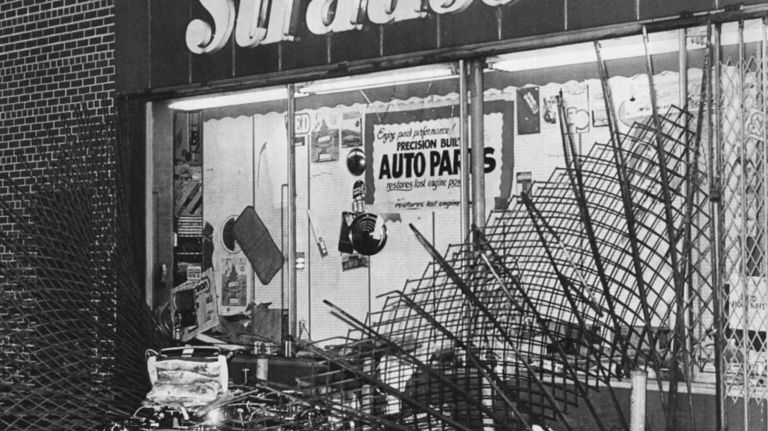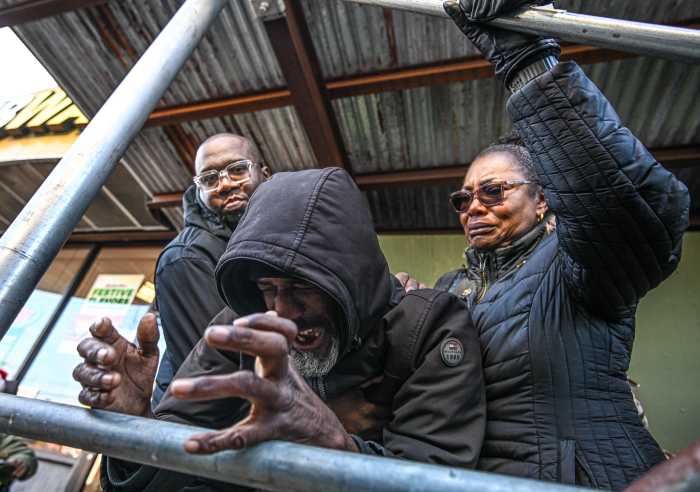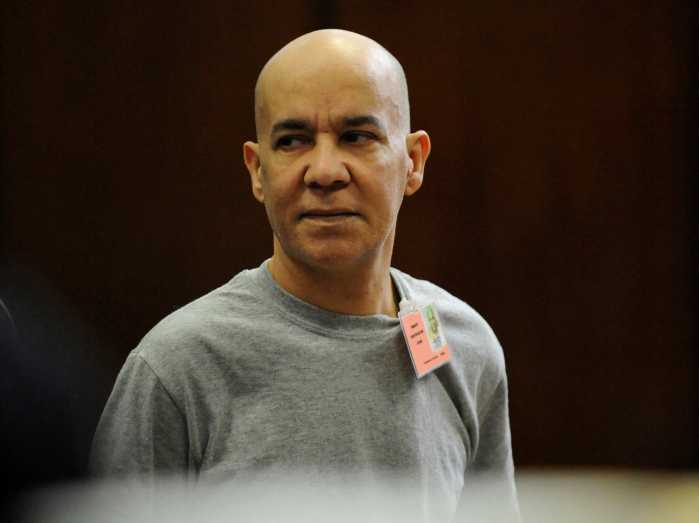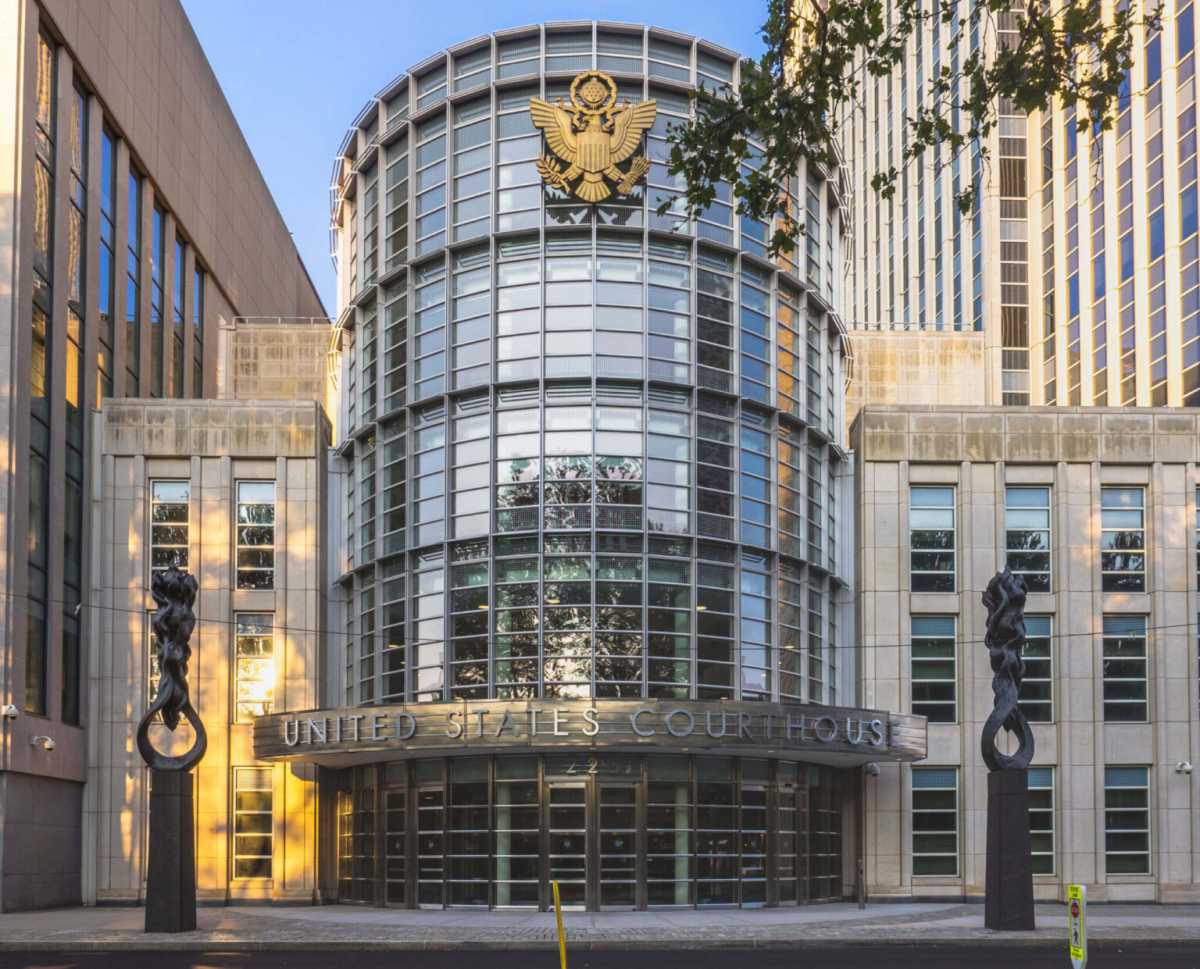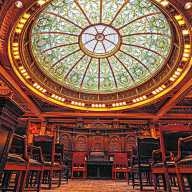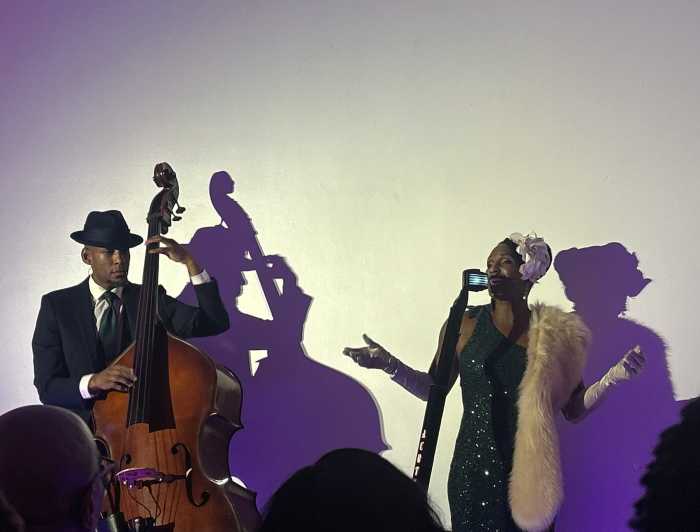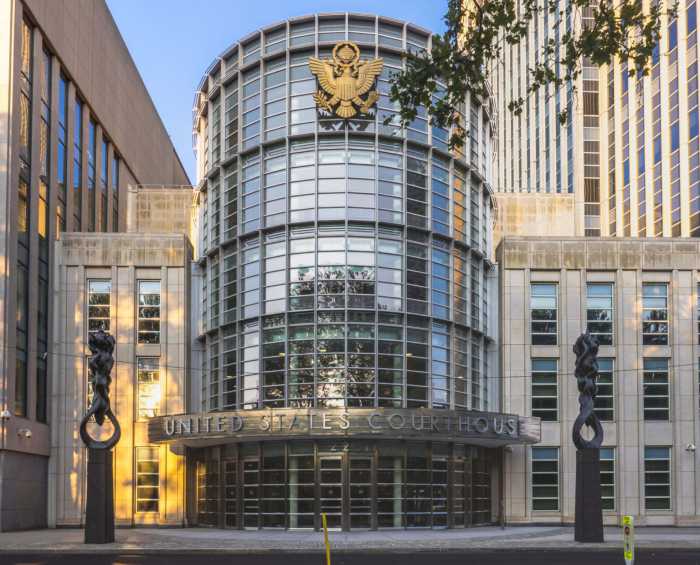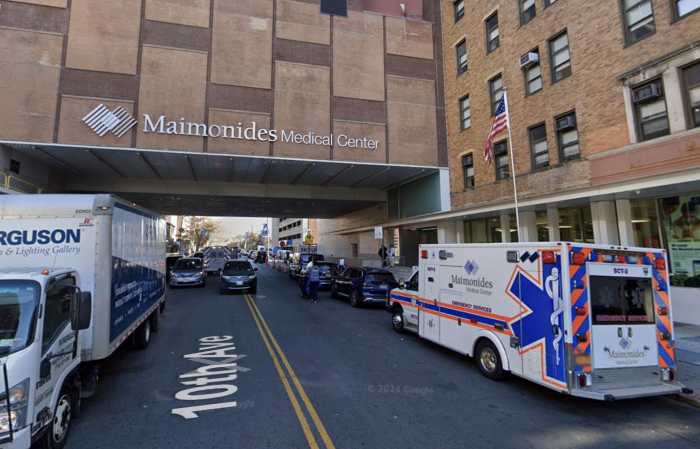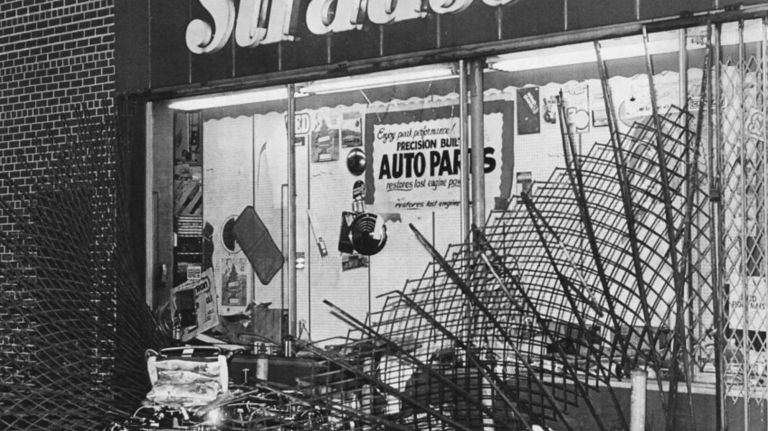
New York City may be known as the city that never sleeps, but that doesn’t mean it can’t go dark.
On Saturday, a Con Edison power failure resulted in a blackout that affected 72,000 customers in the heart of Manhattan. The power outage stopped subway trains in their tracks, stalled elevators and knocked out traffic lights, while the billboards in Times Square went dark and 26 Broadway shows were canceled.
But the five-hour blackout was not the first to hit the city, nor was it the biggest. Read on for a brief history of blackouts in New York City.
1959
A 500-block area of Manhattan near Central Park was plunged into darkness on Aug. 3, 1959, when a massive surge in electrical use triggered a power outage, according to a Time magazine report. About 500,000 people were affected by the blackout, which was reported to last about 13 hours.
“When the lights went on, the city congratulated itself that there had been no panic and little misbehavior,” Time wrote in its August 1959 issue. “In an area where crime incidence is fairly high, police reported only a few misdemeanors and a couple of picked pockets.”
1961
Another uptick in electricity usage is believed to have caused a blackout in Manhattan on June 13, 1961, which affected about 500,000 people across 5 square miles of the borough, according to The New York Times. The outage spurred changes to better protect the city’s power grid from future blackouts, according to The Times.
1965
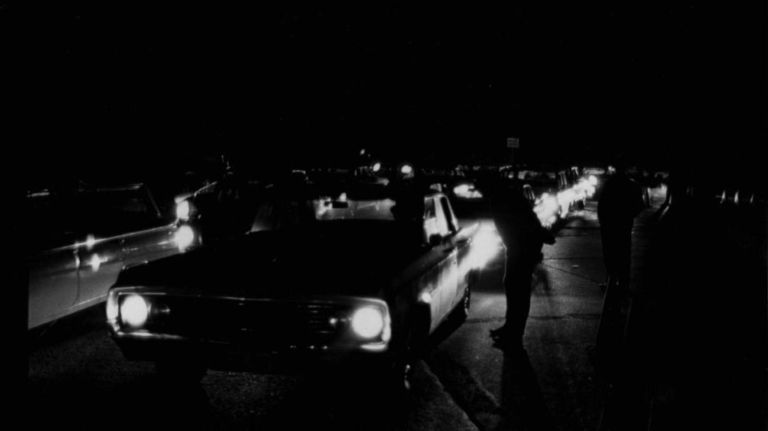 Police direct traffic away from the entrance to the Midtown Tunnel, which was closed due to the blackout on Nov. 9, 1965.” class=”wp-image-133881191″/>
Police direct traffic away from the entrance to the Midtown Tunnel, which was closed due to the blackout on Nov. 9, 1965.” class=”wp-image-133881191″/>Police direct traffic away from the entrance to the Midtown Tunnel, which was closed due to the blackout on Nov. 9, 1965. Photo Credit: Newsday / Bill Senft
On Nov. 9, 1965, a power failure that started in Ontario, Canada spread across the Northeast and enveloped most of New York City. The so-called Great Blackout of 1965 affected about 30 million people in several states and two Canadian provinces, yet the outage is remembered for how it brought New Yorkers together in a time of literal darkness. New Yorkers’ reaction to the power outage, which lasted about 10 hours, would later be thrown into stark contrast to the blackout of 1977.
1977
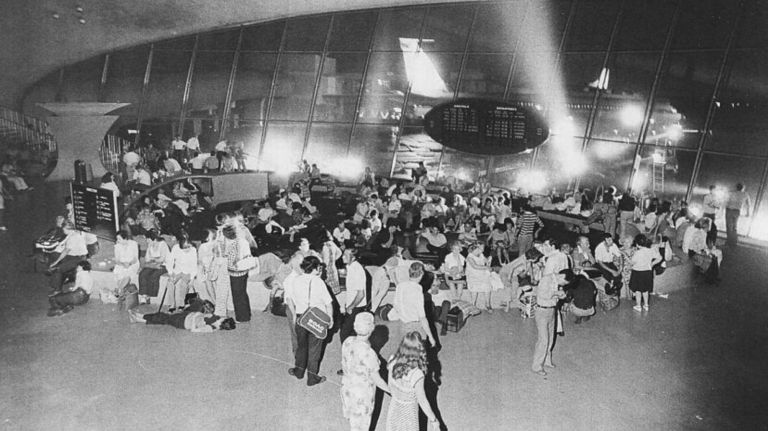 A crowd at the TWA terminal at Kennedy Airport during a massive blackout on July 13, 1977.” class=”wp-image-133881192″/>
A crowd at the TWA terminal at Kennedy Airport during a massive blackout on July 13, 1977.” class=”wp-image-133881192″/>A crowd at the TWA terminal at Kennedy Airport during a massive blackout on July 13, 1977. Photo Credit: Newsday / Alan Raia
While the Great Blackout of 1965 was heralded as a mostly peaceful response to a crisis, the power outage that swept over the entire city on July 13, 1977, was met with violence, looting and arson. The 25-hour blackout, sparked by lightning strikes at two power plants, resulted in 3,800 arrests, 1,037 fires and more than $1 billion in damages, The New York Times reported. LaGuardia and Kennedy airports were shuttered and commuter trains lines were halted. About 4,000 people were evacuated from the subway system, per The Times.
2003
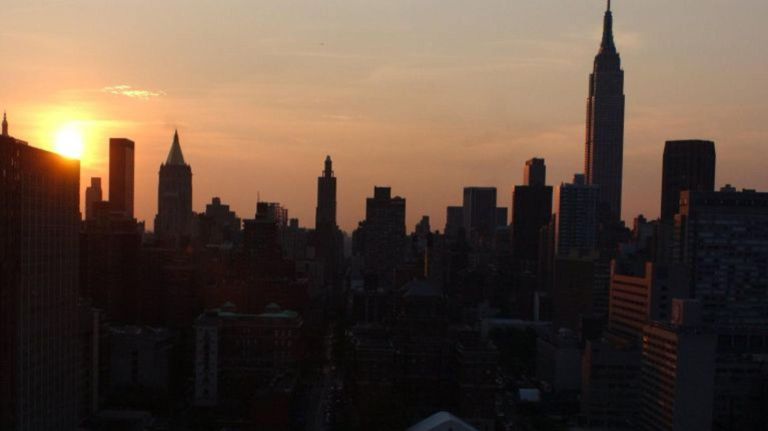
On the afternoon of Aug. 14, 2003, the lights went dark across New York City. But the blackout was actually much larger, affecting about 50 million people and spanning eight states as well as parts of southeastern Canada. The outage, caused by a mix of equipment failures and human error, lasted for 29 hours. But unlike the blackout of 1977, widespread looting and violence did not materialize. Subway riders were evacuated from trains and some commuters walked miles home from work, but most of the injuries reported at city hospitals were heat-related.
2006
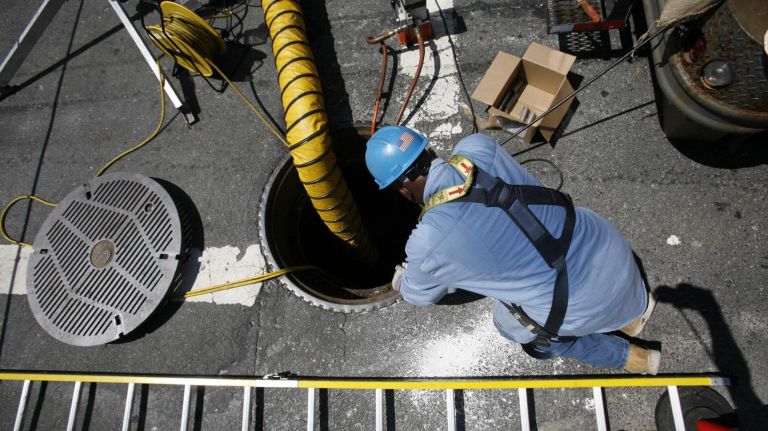
The blackout of 2006 may not be easily recalled by some, primarily because it took place in Queens. About 175,000 people were affected by the power outage, which began on July 17, 2006, and lasted a whopping eight days, according to NYCData by Baruch College Zicklin School of Business. The Queens blackout, caused by a fire at an Astoria substation, is considered one of the longest in New York City history.
2012
When superstorm Sandy roared onto the shores of New York City on Oct. 29, 2012, the storm surge it produced inundated electrical equipment and knocked out power for about 2 million people, many of whom were left in the dark for days or weeks. Almost one-third of those affected were Manhattan customers, according to a report by the mayor’s office. The storm highlighted a weakness in the Con Edison’s power system that prompted $1 billion in flood protections to be installed over the next four years.
2019
The power outage on Saturday that affected 72,000 customers in midtown and on the Upper West Side was caused by a failure of Con Edison’s relay protection system at its West 65th Street substation, the utility announced Monday.
The blackout, which lasted from 6:47 p.m. to about midnight, stalled trains along six subway lines and forced the evacuation of nearly 3,000 straphangers. People were seen jumping into busy intersections to help direct vehicles after the traffic lights went dark.
There were no reports of injuries or fatalities and no spike in crime related to the blackout, according to city officials.



